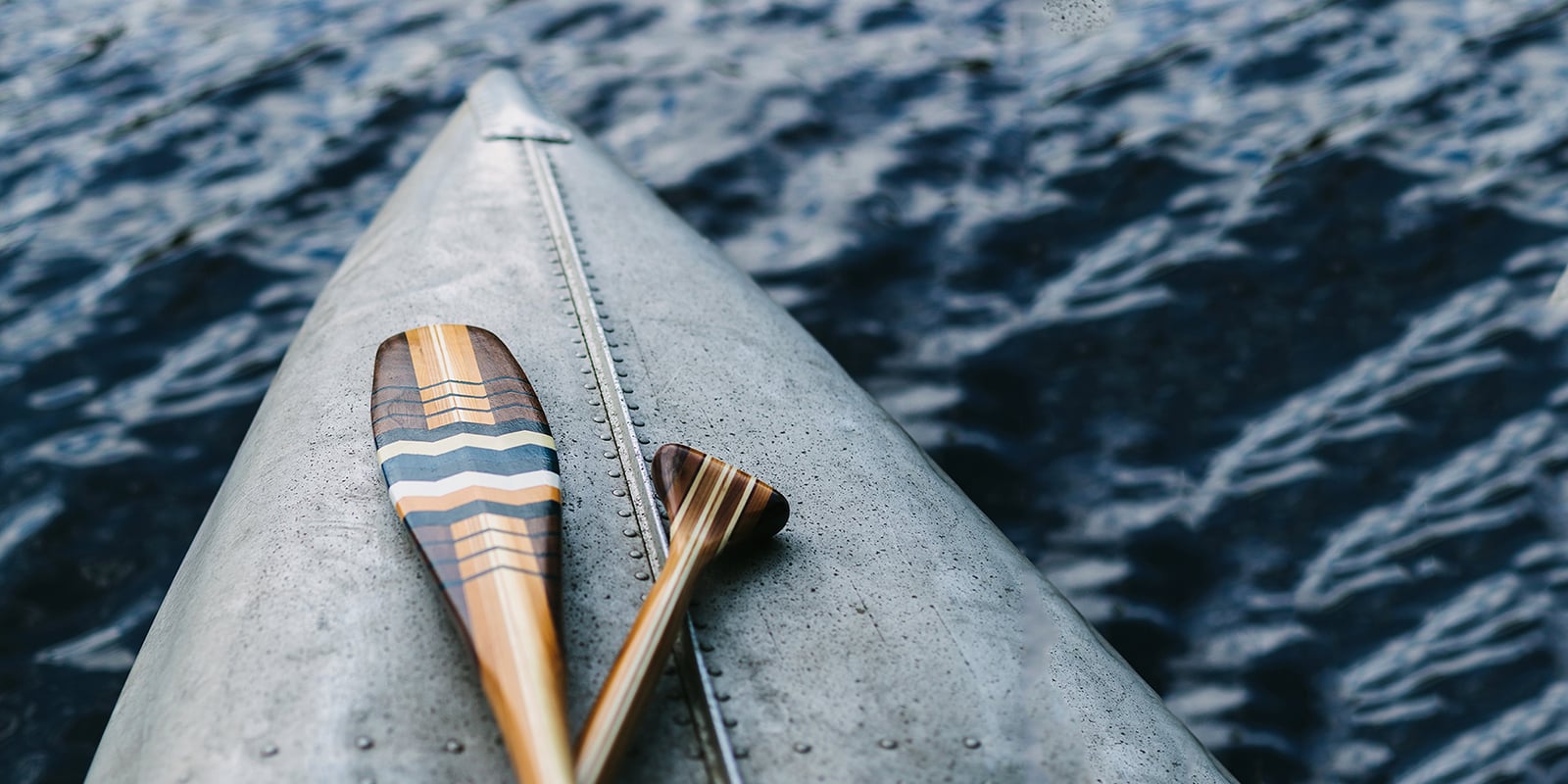Choosing a canoe paddle is not a complicated task. In fact, how it feels in your hands can be as important as the basics of shape, size, grip and materials. This article discusses the key points of a paddle purchase.
Length
Most canoers require a paddle in the 52" to 60" range; sizes are typically offered in 2" increments. Bent-shaft paddles are generally shorter due to their shorter, wider blades; common lengths are 48" to 54".
The best way to choose paddle length:
On the water: Sit inside the canoe and measure the vertical distance from your nose to the waterline. This measurement should match the distance from a paddle's grip to the throat, where the paddle shaft meets the blade.
In store, trying out a paddle: Kneel down with your bottom about 6" off the floor, as if sitting in a canoe. Hold the paddle upside down, with the grip on the floor. The throat of the paddle should be between your chin and your nose.
At home, without a paddle: Kneel down with your bottom about 6" off the floor, as if sitting in a canoe. Measure from the floor to your nose. Add this measurement to the blade length (commonly 20") noted on REI.com product pages for the correct overall length.
To fine-tune the fit:
- For bent-shaft paddles, deduct 2" from the length you've determined above.
- For wider canoes or paddling from the stern (rear seat), consider adding 2" to the paddle length so you can reach the water without excessive leaning.
- Buying for a child? Kid-specific paddles offer shorter lengths, narrower shafts and T-grips so little hands can control them more easily.
Weight
A lighter paddle means less fatigue during a long day of canoeing. But don't shop by weight alone—the best paddles balance weight, strength and flexibility. For flatwater canoeing, a flexible paddle helps absorb shock with every stroke. Whitewater enthusiasts prefer a strong, stiff paddle.
Blade Materials
Wood: Beautiful, responsive and warm to the touch, wood is by far the most popular material for canoe paddles. Laminates enhance performance by combining the best characteristics of different soft and hard woods. Many have a layer of fiberglass over the blade for added strengh or a tip guard to improve durability. Some upkeep, such as sanding and varnishing, is required to maintain its appearance.
Plastic/aluminum: Durable and affordable, these aluminum shafts with plastic blades are a bit less comfortable and responsive than wood. They make great spare paddles and can be a good choice for beginners.
Fiberglass: Rarely seen except for whitewater canoeing (and for stand-up paddleboarding), these are typically more expensive than paddles made of other materials. They are lightweight, durable and virtually maintenance-free.
Tip: Don't be stuck if you lose or break your paddle. Always carry a spare.
Blade Shape
Blade shape is complex, but it can simplified by where you padde:
- Long and skinny blades (traditional beavertail) are good for cruising on lakes.
- Shorter and wider blades are best for rivers and shallow water.
Not sure what size to get? Paddle blades measuring 8" x 20" are most common and are a suitable choice for most canoers.
Grips
There are 2 common shapes:
- A palm grip (also called a pear or teardrop grip) offers flatwater paddlers excellent comfort and control. The shape fits naturally into the palm of your hand and is comfortable for long trips. Most paddles have a palm grip.
- A T-grip lets you wrap your fingers around the handle, so it offers precise control and a sure grip. Because of this, it is the preferred shape for whitewater paddlers and children's paddles.
Shaft
Choose between 2 shapes:
- Straight: This traditional style handles all-around paddling. It excels on rivers because it allows a variety of maneuvering and bracing strokes. Whitewater canoers almost always prefer these.
- Bent: Best for flatwater paddling or cruising, a bent shaft helps position the blade for maximum efficiency. The blade remains vertical in the water during the most powerful part of your stroke, plus it helps the paddle enter and exit the water smoothly. Angles range from about 7° to 14°. Smaller angles are less efficient but allow a greater variety of strokes.
Shaft diameters can be round or oval in shape. Oval shafts offer a more comfortable grip than the traditional round shape. Some round shafts feature an oval section for better grip. This is called oval indexing.
